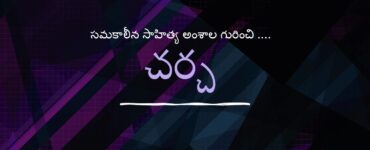Stories are the lifeblood of any community and have been a powerful means of communication in Kashmir for a reason. Story telling in Kashmiri was quite in vogue and was a much utilized form in the oral traditions. It was the preserver of the folk literary tradition that emerged from the divergent communities. The stories are deeply embedded in the landscape of Kashmir and display a powerful geographical sense. Gunadhya’s Brihatkatha was the first attempt as a written short story.
At the turn of the 20th century a vibrant tradition of storytelling in the vernacular Kashmiri that paralleled Kashmir’s rich, multilingual textual traditions is discovered by the western oriental scholars. Aurel Stein and the linguist George Grierson recorded Hatim Tilowon’s stories, translating them into English, and later publishing them in a collection entitled Hatim’s Tales. The idea of Kashmiriat or the Kashmiri identity intrinsically woven with the topography of the land, traditions and the passionate association with the folk and Sufi strains of music are the features that mark Kashmiri short story in the 20th century.
Great short story writers like Nadim, Akhter Moinuddin, Amin Kamil, Bansi Nirdosh, Hari Kishan Kaul, Hriday Koul Bharti, Arjan Dev Majboor, Farooq Masoodi reflected several issues related to Kashmiri psyche and problems.
The short story in Kashmir started marking its presence with the progressive movement in Kashmir. Dinanath Nadim’s “Javabi Card” (Reply Card) and Somnath Jutshi’s “Yeh Phol Ghash” (When there was Light) are the first two short stories written in Kashmiri published in the journal ‘Kong Posh’. Through “sheena, peto, peto”, Nadim consummately depicts the abject pathos and poverty of the Kashmiris. It also reveals his compassion towards people at the lower rungs of Kashmiri rural society. His other notable short story is “ray” (Blight).
In the 1960’s, the Kashmiri short story continued to develop in the hands of writers like Amin Kamil, Akhter Mohiuddin, Sofi Ghulam Muhammad, Ali Muhammad Lone, Taj Begum Renzu, Umesh Koul and Shankar Raina. From the political and other points of view this was a period of complications and complexities. But these are not reflected as well in the short story as in the poetry of the age although the short story naturally presented a great scope. The complete potential of Kashmiri short story is felt only in 1970s.
In the hands of Akhter Mohiuddin (1928-2001) the Kashmiri short story came to its fruition. He chose and presented peculiar characters and situations from his environment. He portrayed the lives of hard working people from the lower rungs of society. The humour and sarcasm, which was missing in earlier story writers was abundantly conspicuous in AKhter. He produced masterpieces like “dand wazun” (The brawl), “daryaayi hund yezaar” (The bridal pyjamas), “aapan hor jang” (Aapa lost the fight) and “aadam chhu ajab zaat” (Man is a strange breed). His characters from the local life have become universally appealing due to the craftsmanship of the writer in lending such authenticity. “Sath Sanghar” (Seven Peaks) was the first collection of his as well as Kashmiri stories which was published in 1955. His second collection was Sonzal (Rainbow). It carries his seven stories and was published in 1959. His third collection was 71979 and Other Stories. His short story “dande wazun” (The squabble) depicts people from the lower rungs of the society and captures a slice of living from the day toady vagaries of life. His, “daryaye hund yazare” (The bridal pyjamas) is the celebration of a moment of intimacy between an aged couple. Akhter’s story “sheene jung” is an apt comment on the exploitative economic system prevalent in the traditional Kashmiri society and the gullibility of the masses who are fooled by the outward kindness and generosity of the exploiters. The armed insurgency in Kashmir against the Indian rule also gets reflected in such short stories of his as “aatank vadi” (The terrorist), “nav bemaere” (New disease) and “jali hind danda phel” (The broken teeth of Jalla Bibi). These stories show the resilient spirit of those caught in the quagmire of brutal oppression and constant surveillance unleashed by the security apparatus to check armed revolt by Kashmiris against the Indian rule.
Amin Kamil (1923-2014), one of the defining litterateurs of the Kashmiri language and literature, was a prolific short story writer who painted Kashmir on the canvass of his stories. His forte lies not in narrating the incidents but in going beyond, delving deep into the working of the Kashmiri mind. His keen observation of the surroundings and the kind of characters they breed in their lap remains unparallel. All the stories in Kamil’s collection of stories, kathi manz kath, read like an album from the cultural life of Kashmir. Kamil’s story “yaadoosto guguu guu” (And the dove cooed) depicts the cynicism brought in by the exploitative politics unleashed in the name of progressivism and communism which was in rife around 1947s in the sub-continent and also in Kashmir. His story ‘koker jung’ (The cockfight) still remains the unparalleled delineation of ethnic unpolished Kashmiris. Two other stories, “phatak” and “sawal cchu kaluk”, bring into focus the exploitative administrative set-up of the ruling class that belonged to a different religion from that of its subjects. However, what makes these stories still relevant is that nothing has changed; only the rulers have changed.
The stories of Bansi Nirdosh ( 1930 – 2001) reflect a deep and penetrative awareness of the Pandit life. The characters are delineated in a way that reflects the author’s consciousness of that ethnic vision of Kashmiri Pandits and their extra-cautiousness about preserving their cultural and ethnic identity. The characters and dialogues in his stories refer to the efforts by the Pandits to grapple with preserving their identity. Only three collections of his stories, namely, baal mareeyoo (May I die young for you), aadam chhu yithay badnaam (Man is infamous for nothing), and girdaab (The whirlpool) have been published. Besides these, he published one novel, titled akh daur (An era). His unique contribution to the art is that he particularized the setting of Kashmir in the form and for this purpose he used narration of events as a tool. Nirdosh’s characters are typical Kashmiri Pandits who are deeply involved with their locale and the characters around them.
Hari Krishan Koul (1934-2008) is one of the most important short story writers in the Kashmiri language. He produced four short story collections: pata laran parbath (The Chasing Hill), haalas chu rotul (For Now it is Dark), yath raazdane (In This Capital City) and zool aparyum (Illuminations Across). He published his first collection pata laran parbath in 1972.
His stories cover socio cultural set up, ethnic cultural tensions and socio cultural tensions faced by the Kashmiri pandits and the exploitation of the common Kashmiri. Stories like “Taaph” , “yath razdane” and “Phari” illustrate this.
Hridey Koul Bharti (1937- ) has contributed a lot to the development of the Kashmiri fiction. “Shikast”, “aabnosuk rolar”, “hamzaad”, “vakhte kis chokhatas manz” are some of his notable stories. Bharti is a master in creating personal images. His technique is based on a combination of ‘dream and reality’ and ‘myth and history’. The loss of the identity is one of the central motifs of his stories. In one of his stories, “hamzaad”, a person sees people chattering like monkeys, having a thick hairy skin like them. He is able to see this as long as he keeps his distinct identity. Bharti concentrated on creation of personal symbols in his short stories and by relating myth with his personal experiences, he, in a way, created new myths. In “tsekre viyuh’ (The wheel of the destiny), the author tries to say that our destinies are as much predestined as the frozen moments in photographs or paintings, hanging on the walls of his room. In this story, the narrator is engrossed in looking at the painting of Abhimanyu, a character from the Hindu mythological epic, Mahabharata, alongside the picture of Ibn-e Ishaq, his classmate from an African country. The past is ossified in the formation of the wall images
The very few stories written by Arjan Dev Majboor (1924-) made their impact on the over-all development of this genre in the Kashmiri language. “haaras to korun wande” (Spring Has Turned into Autumn) is one of his moving stories that deals with the predicament of the migration of the Pandits from Kashmir. The central character of the story is a seventy year old lady Poshi Kuj who has lost her memory with the loss of her motherland. She continues to live in Kashmir in her mind while being away from it. She lives each season of Kashmir, its landscape, snowfall, mountains, gardens and the gushing streams. The story is a chilling reminder of the kind of existential, ethnic and cultural challenges that the Kashmiri Pandits had to face in the wake of their migration from their motherland, Kashmir. The story especially focuses on the aged Pandits who could not reconcile to the hostile weather and environment they had to bear outside Kashmir.
Farooq Masoodi is known for writing stories that challenge the conventional understanding of the genre or that of the society. He has a knack of challenging the society with his narrative and the narrative with the way he looks at society. His stories are set among the run of the mill of the Kashmiri ethnic society. His philosophy originates from the local sources which have been feeding the indigenous literary tradition of Kashmir.
He presented his characters in their essential nudity, emphasizing the fact that since every person is irretrievably enmeshed in various circumstances, he is basically governed by animal instincts. Masoodi experimented in the art through such of his stories as “noshi lab”, “kohi qaaf”, “samaah”, “alfatah” and “kohi qaafas peth pari” , “jin te hero” etc. In these stories, Masoodi puts forth his experiences in the form of powerful symbols. “The spectacle” by Farooq Masoodi is a beautiful depiction of the loss of cultural identity as perceived by the Kashmiris themselves. The story is set in the backdrop of the civilisational mores of the Kashmiri icons like the river Jhelum to mourn the loss of that identity which was a matter of pride for Kashmiris once upon a time.
*
On the other hand, though novels in English and Urdu had a strong readership in Kashmir, did not flourish so well in Kashmiri language. There are only around a dozen worthwhile novels that have been written in Kashmiri.
The first kashmiri novel was written only in 1957 by Akhtar Mohiuddin. His novel ‘Do’d Dad’ was chosen to be written in kashmiri as it is about kashmiri people. It is about the exploitation of two orphaned sisters by various people who represent different facets of society. Zuv ta Zolaana is his other novel where too the author explores marriage as a social institution.
Gati Manza Gaash (Light amidst Darkness) by Mohd. Amin is the depiction of the rough times that Kashmir experienced around 1947 when the tribesmen, brutalised all the people around. It is the story of one’s faith in old world values and principles even in the face of untold hardships and rapid changing inhuman conditions. The novel projected the rough time that the kashmiris of those times underwent. The next work, A’si Ti ChhiInsaan (We Too Are Human), is built around the pilgrimage to Shri Amarnath Cave in a maze of mountains 40 kilometers beyond Pahalgam.
Chandrakanta (1938-) is a contemporary author from Kashmir who writes mainly in Hindi. Her novel, Ailan Gali Abhi Zinda Hai- A Street in Srinagar- depicts the pre-conflict phase in Kashmir’s history, characterised by relative harmony and peace, and the post-1990 phase characterised by violence and a disintegrating social order through the metaphorical description of a congested street, right in the heart of Srinagar city. “Mujrim” is another well known work that looks into the pitfalls of the legal institutions where the innocent are often punished due to the legal machinery and the lapses in the system.
S.L.Sadhu Who traces the history of kashmiri novels in 1973 through his article ‘Kashmiri novel’ feels that the Kashmiri novel has not yet reached its fruition stage and he feels lack of readership as one reasons and counters his own observation that a work with its own craft and distinction would naturally get readership.
Chaman Lal Hakhoo’s “Lion of Wasturvan” is a study of human experience uncovering fascinating labrynths of history of modern Kashmir. According to Raina, “The novel takes the ancient traditions of Kashmiri literature and combines it with the style of modern Indian literature.” Lion of Wasturvan is the tale of Ahmad Lone and Dina Nath in the background of the happenings in Kashmir starting from impacting incident of July 1931 to the time when in 1948 Sheikh Mohammad Abdullah took over as the prime minister of the J&K state.
In Mirza Waheed’s debut novel, The Collaborator (2011), the protagonist narrator is a young 19-year-old Kashmiri Gujjar (pastoralist) man from a border village on the Indian side who is forced to work for the Indian army counting bodies of militants and collecting their identification cards. The unnamed young man’s inability to escape this life of collaboration with the occupiers and join his friends on the other side of the border as a freedom fighter, leaves him suspended in an incomprehensible and isolated space. The Collaborator vehemently rejects the Indian and Pakistani nationalist discourses on Kashmir as it brings out the diffuseness of trauma for those whose lives are destroyed by these nationalist narratives.
Waheed’s second novel, the Book of gold leaves (2014), is set in the city of Srinagar, the center of conflict at the beginning of the insurgency in the early 1990s, with a love story as its backdrop. As readers, we get so caught up in the lives of the characters and their families that the insurgency sneaks up on us, much as it sneaks up on the characters. The novel thus captures the everydayness, the commonplace nature of the conflict, even as it illustrates how thoroughly it reconfigures the lives of the people who have no choice but to live through it.
Siddhartha Gigoo’s debut novel The Garden of Solitude (2011), is the story of another Kashmiri young man as he grapples with violence, exile, and self-realization in the midst of the conflict. The Garden of Solitude illustrates poignantly the anguish experienced across community lines as both communities suffered unfathomable losses—the exiled Pandits lost their homeland, their ancestors, and their past; the Muslims who stayed in Kashmir lost their sons, their neighbors, and their future. All that remains in Kashmir is a broken present. His short story collection, A fistful of earth and other stories (2015), is woven around the travails of the Pandits as they become refugees in their own country. The lead story, “The Search,” takes place in a future where the community has ceased to exist, and any evidence that proves that it ever existed, is located in the Museum of the Disappearing Clans. The story suggests that the community disappears not just because it is forced out of its homeland, but also because without access to its books, manuscripts, heirlooms, and stories, it can no longer hold on to its own memory.
Perhaps waiting as a condition of trauma is best illustrated in another debut novel, The Half Mother (2014), by Shahnaz Bashir. At the beginning and end of this novel, the protagonist, Halima, sits endlessly by the window of her house waiting for the return of her disappeared son, who is taken by the Indian army one night. In between, she runs from pillar to post attempting to locate him at detention centers, army camps, and police stations, all to no avail. For her, daily routines are suspended; day and night merge into each other as she waits and searches. The only possibility of reunion with her son is in a dream, from which she has to perforce wake up, only to begin the ritual of waiting yet again.
Past, steeped in nostalgia, can still be resurrected. The narratives thus read as eulogies to an idyllic past defined by peace, friendship, and neighborliness, set in the especially blessed landscape of Kashmir. In The Half Mother, Halima lovingly recalls her childhood and that of her son in their house encircled by a plum orchard, listening to stories told by her father, or playing with chickens in the courtyard. In The Garden of Solitude, the past “too beautiful to be left behind” appears in snippets in dreams—where Sridhar walks hand in hand with his father in the old homeland, admiring the beauty of the frozen lake in the winter or tasting half-ripe almonds in the spring.
Fiction no doubt challenges Indian and Pakistani state-centered nationalist narratives, but at the same time it also calls into question the extremist communitarian and historical narratives put forward by those claiming to represent the grievances of Kashmiri Muslims and Kashmiri Pandits. No single community, we realize as readers, has exclusive rights on the trauma and the ensuing grief of people. Instead, one recognizes that the main experience of trauma resides not in specific events that target particular communities, but in their aftermath that tears communities, neighbors and friends apart.
One of the first books to come out of Kashmir after the abrogation of Article 370 is Shabir Ahmad Mir’s The Plague Upon Us (Rs 550, Hachette). The Pulwama-based writer and poet has weaved a story narrated separately by four childhood friends – a youth caught in the conflict, the daughter of a social climber, the son of a moneyed landlord and a militant. Drawing from life in the ’90s and several events that have shaped the politics of the region, the story tries to bring out its layered complexities and the impact it has on relationships.
These novels and short stories refuse to forget or allow us to forget. They commemorate the shared culture that allowed different communities to co-exist in Kashmir and profoundly lament its loss, but they also force us to acknowledge the atrocities committed against individuals solely because they belonged to particular (religious) communities. They reveal the deep cleavages in Kashmir’s body politic exposed by the conflict, which forced individuals and communities to take sides.
References
http://www.kashmirconnected.com/traumatic-pasts-in-kashmiri-fiction.html
Kashmir Journal: traumatic pasts in Kashmiri fiction
https://indianexpress.com/article/books-and-literature/i-am-very-hopeful-about-the-future-kashmiri-writer-shabir-ahmad-mir-6562225/
I am very hopeful about the future: Kashmiri writer Shabir Ahmad Mir
http://www.ikashmir.net/hkkaul/obituary.html Hari Krishen Kaul: Chekov of Kashmir
Hari Krishen Kaul
Kashmiri literature and some of its great moments
Akshay Sharma
http://www.ikashmir.net/stories/
http://www.kashmirconnected.com/stories-and-storytellers.html
Kashmir Journal: stories and storytellers
We must remain in order to be sane by Chitra lekha Zutshi
https://www.boloji.com/articles/16209/lion-of-wasturvan-a-kashmiri-novel-by-chaman-lal-hakhoo
Kashmiri Novel Author(s): S.L. SADHU Source: Indian Literature , January-June 1973, Vol. 16, No. 1/2 (January-June 1973), pp. 292-300 Published by: Sahitya Akademi
Stable URL: http://www.jstor.com/stable/24157475
Kashmiri short story
Harikrishna Kaul and Tara Tikku 1973
Modern Kashmiri Fiction and the New Morality Author(s): AkhtarMohi-ud-Din Source: Indian Literature , September-October 1978, Vol. 21, No. 5 (September-October 1978), pp. 81-86 Published by: Sahitya Akademi
Stable URL: http://www.jstor.com/stable/24158553
The Kashmiri Short Story Author(s): HARI KRISHNA KAUL and Tara Tikku Source: Indian Literature , January-June 1973, Vol. 16, No. 1/2 (January-June 1973), pp. 285-291 Published by: Sahitya Akademi
Stable URL: http://www.jstor.com/stable/24157474
*









Such an exhaustive account of Kashmiri shirt story and Novel ,even to give one reading it took 30 minutes or more.A commendable job and many thanks for that.and references given are invaluable. My warm regards and wishes to the authors. Thankyou.
Thank you for your valuable observations.
Thank you Ms. Sailaja for the appreciation